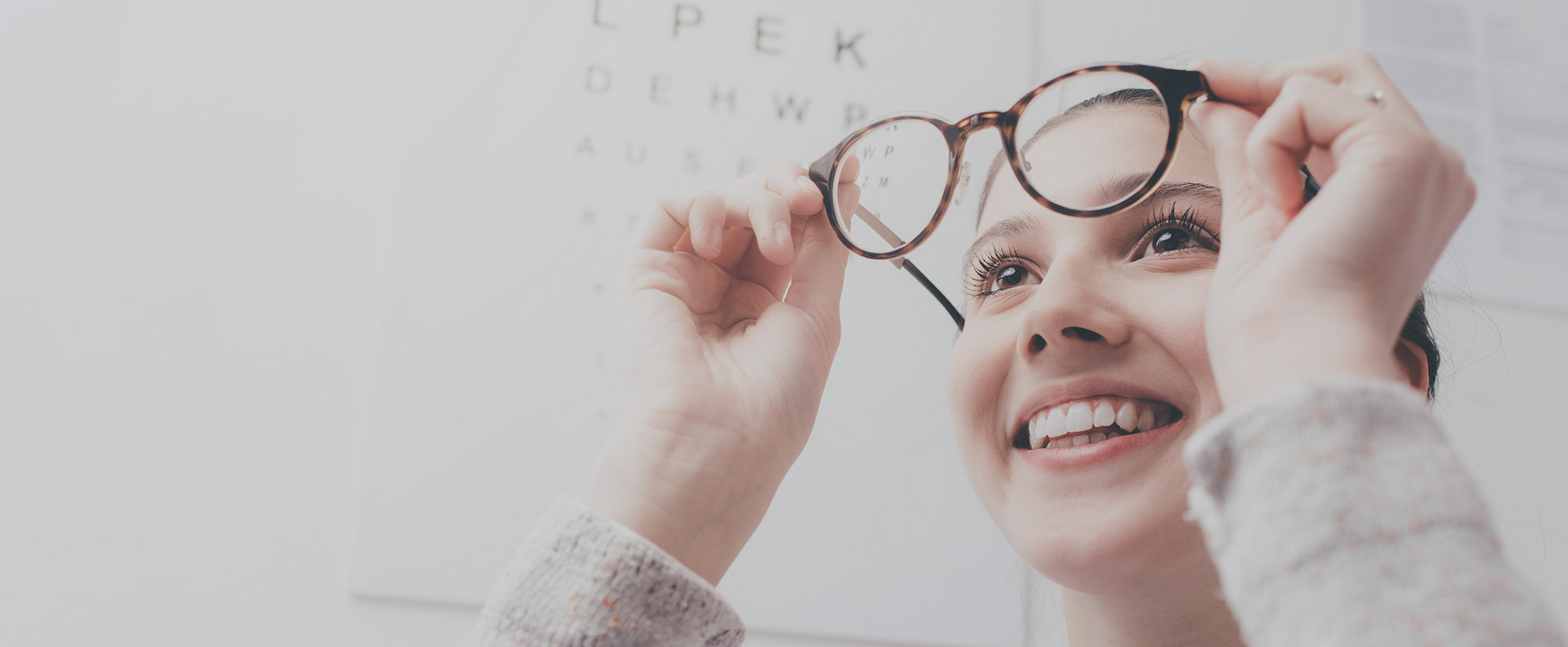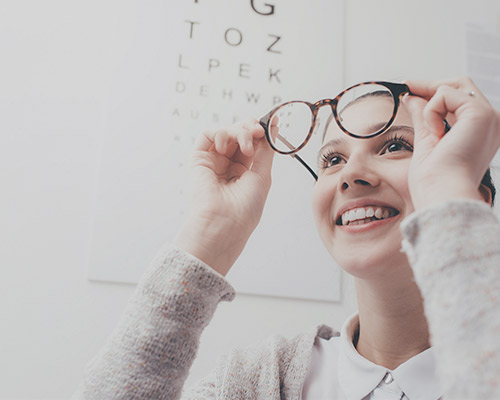

Protocol for our new patients is pretty standard. Before your eye exam, the eye doctor or an office staff member will take your medical and vision history. Your eye exam may take from half an hour to an hour. It will evaluate both your vision and the health of your eyes.
You’ll likely have all or most of the following eye tests (you may also have more specialized eye tests):
Eye muscle movement test: To assure that the eyes are normally aligned, the doctor will ask you to visually track a target in different directions and observe your eye movements.
Cover test: This is a check for how well your eyes work together. As you stare at a small target some distance away, the doctor will cover and uncover each eye to observe how much your eyes move, watching for an eye that turns away from the target (strabismus). The test may be repeated with a target close to you.
External exam and pupillary reactions: The doctor will watch the reactions of your pupils to light and objects at close distance. At the same time, the doctor will check the exterior eye, looking at things such as the condition of the white of the eyes and the position of your eyelids.
Visual acuity test: You’ll sit in front of an eye chart, with letters that get smaller as you read down each line. You cover each eye in turn and, using the other eye, read aloud, going down the chart, until you can’t read the letters anymore.
Retinoscopy: The eye doctor may shine a light in your eyes and flip lenses in a machine (phoropter) that you look through while staring at a large target, such as a big “E,” or the doctor may use an automated machine (refractor) for the same purpose. By checking the way light reflects from your eyes, the doctor gets an approximate idea of the lens prescription you need now.
Refraction testing: For your exact lens prescription, the eye doctor may use the results of the computerized refractor, or he or she may fine-tune the prescription manually by asking you to respond to questions such as, “Which is better, this or that?” while flipping back and forth between different lenses. If you don’t need corrective lenses, you won’t have this test.
Slit lamp (biomicroscope): The slit lamp magnifies and lights up the front of your eye. The eye doctor uses it to detect several eye diseases and disorders by examining your cornea, iris, lens, and anterior chamber.
Retinal examination (ophthalmoscopy): Using an ophthalmoscope and pupil dilation, the eye doctor examines the back of your eyes: retina, retinal blood vessels, vitreous, and optic nerve head.
Glaucoma testing: This tests whether the fluid pressure inside your eyes is within a normal range. Painless and taking just a few seconds, the test can be done several ways, tonometer or “puff of air”.
Pupil dilation (enlargement): With your pupils fully enlarged, the eye doctor will examine the inside of your eyes with different instruments and lights. The pupil-enlarging drops for this part of your eye exam start to work after about 20-30 minutes, making your eyes more sensitive to light and blurring your vision. These effects may last for several hours or longer so it’s important to bring a pair of sunglasses to your exam for the ride home.
Besides these common tests performed during a standard comprehensive eye exam, your eye doctor may recommend other, more specialized eye tests. In some cases, such tests are performed by other eye doctors, such as retinal or corneal specialists, on a referral basis.
© 2025 Siegmund Eye Care • Web Design by Three Ring Focus • Privacy / Terms / Employment